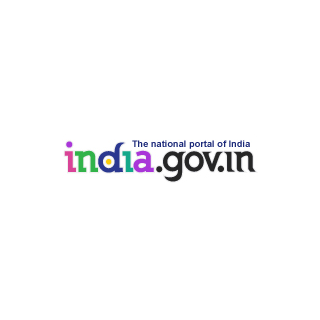
Union Minister of Finance and Corporate Affairs Smt. Nirmala Sitharaman presented the Union Budget 2025-26 in Parliament. Here is the summary of her budget speech;
Together, we embark on a journey to unlock our nation's tremendous potential for greater prosperity and global positioning under the leadership of Hon'ble Prime Minister Shri Narendra Modi.
Quoting Telugu poet and playwright Shri Gurajada Appa Rao's famous saying, 'A country is not just its soil; a country is its people.' - the Finance Minister presented the Union Budget 2025-26 with the theme "Sabka Vikas" stimulating balanced growth of all regions.
In line with this theme, the Finance Minister outlined the broad Principles of Viksit Bharat to encompass the following:
- Zero-poverty.
- Hundred per cent good quality school education.
- Access to high-quality, affordable, and comprehensive healthcare.
- Hundred per cent skilled labour with meaningful employment.
- Seventy per cent women in economic activities; and
- Farmers making our country the 'food basket of the world'.
- The total receipts other than borrowings and the total expenditure are estimated at ₹34.96 lakh crore and ₹50.65 lakh crore respectively.
- The net tax receipts are estimated at ₹28.37 lakh crore.
- The fiscal deficit is estimated to be 4.4 per cent of GDP.
- The gross market borrowings are estimated at ₹14.82 lakh crore.
- Capex Expenditure of ₹11.21 lakh crore (3.1% of GDP) earmarked in FY2025-26.
- Prime Minister Dhan-Dhaanya Krishi Yojana - Developing Agri Districts Programme
- Building Rural Prosperity and Resilience
- Aatmanirbharta in Pulses
- Comprehensive Programme for Vegetables & Fruits
- Makhana Board in Bihar
- National Mission on High Yielding Seeds
- Fisheries
- Mission for Cotton Productivity
- Enhanced Credit through KCC
- Urea Plant in Assam
- Revision in classification criteria for MSMEs
- Credit Cards for Micro Enterprises
- Fund of Funds for Startups
- Scheme for First-time Entrepreneurs
- Focus Product Scheme for Footwear & Leather Sectors
- Measures for the Toy Sector
- Support for Food Processing
- Manufacturing Mission - Furthering "Make in India"
- Investing in People
- Saksham Anganwadi and Poshan 2.0
- Atal Tinkering Labs
- Broadband Connectivity to Government Secondary Schools and PHCs
- Bharatiya Bhasha Pustak Scheme
- National Centres of Excellence for Skilling
- Expansion of Capacity in IITs
- Centre of Excellence in AI for Education
- Expansion of medical education
- Day Care Cancer Centres in all District Hospitals
- Strengthening urban livelihoods
- PM SVANidhi
- Social Security Scheme for Welfare of Online Platform Workers
- Investing in the Economy
- Public Private Partnership in Infrastructure
- Support to States for Infrastructure
- Asset Monetization Plan 2025-30
- Jal Jeevan Mission
- Urban Challenge Fund
- Nuclear Energy Mission for Viksit Bharat
- Shipbuilding
- Maritime Development Fund
- UDAN - Regional Connectivity Scheme
- Greenfield Airport in Bihar
- Western Koshi Canal Project in Mithilanchal
- Mining Sector Reforms
- SWAMIH Fund 2
- Tourism for employment-led growth
- Investing in Innovation
- Research, Development and Innovation
- Deep Tech Fund of Funds
- PM Research Fellowship
- Gene Bank for Crops Germplasm
- National Geospatial Mission
- Gyan Bharatam Mission
- Exports as the 4th Engine of Development
- Export Promotion Mission
- BharatTradeNet
- National Framework for GCC
- Reforms as Fuel: Financial Sector reforms and Development
- FDI in Insurance Sector
- Credit Enhancement Facility by NaBFID
- Grameen Credit Score
- Pension Sector
- High Level Committee for Regulatory Reforms
- Investment Friendliness Index of States
- Jan Vishwas Bill 2.0
- Annual Financial Statement (AFS)
- Demands for Grants (DG)
- Finance Bill
- Statements of Fiscal Policy under the FRBM Act, 2003
- Expenditure Budget
- Receipt Budget
- Expenditure Profile
- Budget at a Glance
- Memorandum Explaining the Provisions in the Finance Bill
- Output Outcome Monitoring Framework
- Key Features of Budget 2025-2026
- Access Full Speech of Minister of Finance
Budget Estimates 2025-26
Agriculture as the 1st Engine of Development
MSMEs as the 2nd Engine of Development
Investment as the 3rd Engine of Development
Budget Documents
For all inquiries : Visit
Related Links





